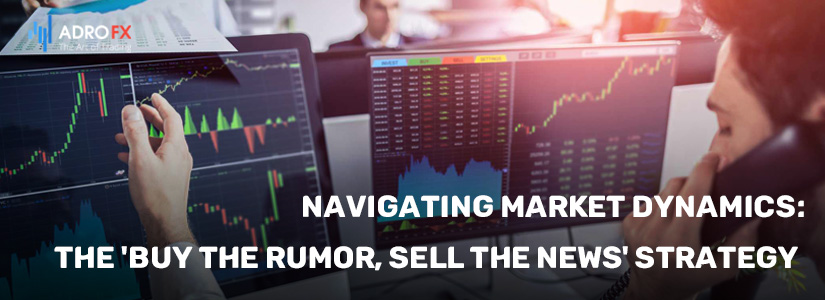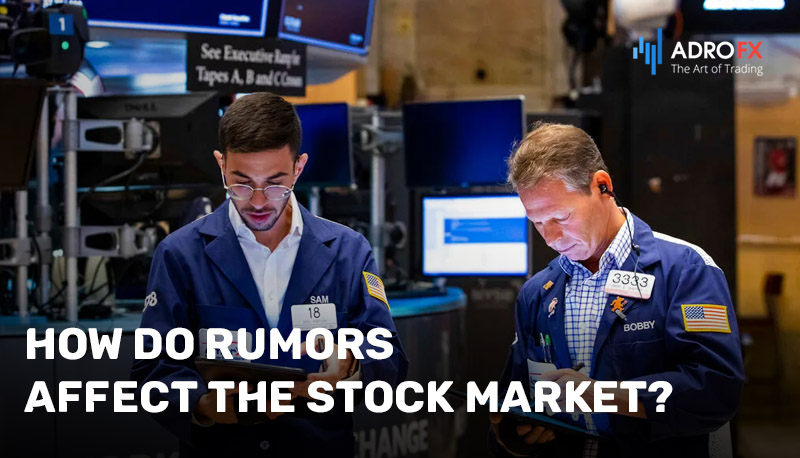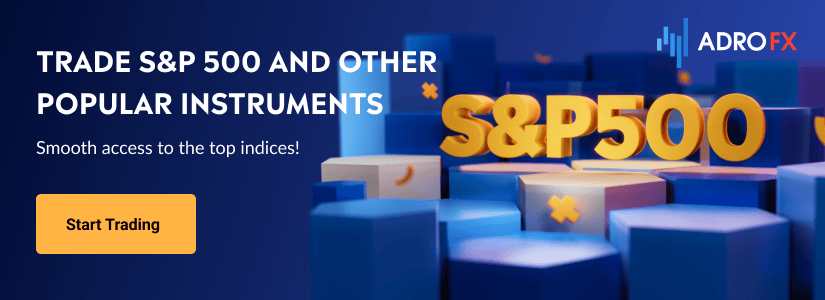Navigating Market Dynamics: The 'Buy the Rumor, Sell the News' Strategy

In the ever-evolving landscape of financial markets, strategies that exploit human psychology and market sentiment play a pivotal role in shaping trading decisions. One such strategy that has garnered attention and debate is the "Buy the Rumor, Sell the News" approach. This strategy capitalizes on the inherent market behavior observed when traders anticipate and react to upcoming news, events, or developments.
In this article, we delve into the mechanics of the "Buy the Rumor, Sell the News" strategy, dissecting its core principles and exploring the optimal conditions under which it can be effectively employed.
While often touted as a simplistic maxim, the strategy's successful implementation requires a nuanced understanding of market dynamics, timing, and the interplay between information dissemination and investor behavior. Join us as we navigate through the intricacies of this strategy, unravel its potential benefits and pitfalls, and provide actionable guidelines on how and when to utilize the "Buy the Rumor, Sell the News" approach to make informed and strategic investment decisions.
What Is the "Buy the Rumor, Sell the News" Strategy?
The "Buy the Rumor, Sell the News" strategy is a widely recognized trading approach that hinges on the idea of exploiting market sentiment and anticipation leading up to significant news or events. This strategy operates on the principle that traders often act on speculations and rumors, causing asset prices to rise in the buildup to the anticipated event. However, once the news is officially announced, reality might not always align with the speculation, leading to market adjustments that can result in price reversals. In essence, this strategy suggests that traders should purchase assets during the phase of rumors and expectations, aiming to benefit from the upward price movement. Conversely, they should consider selling or taking profits when the news is made public, as the subsequent market reaction could lead to price corrections.

The effectiveness of the "Buy the Rumor, Sell the News" strategy rests upon the emotional responses of market participants. It capitalizes on the FOMO (Fear of Missing Out) and excitement that tend to drive trading decisions based on rumors, causing temporary surges in asset prices. However, these price increases might not always be substantiated by the actual news, leading to a potential price reversal once reality sets in. As such, successful implementation of this strategy demands a keen understanding of market psychology, careful timing, and a discerning evaluation of the reliability of the rumors at play.
A good example of this situation happened in the cryptocurrency industry a couple of years ago. The price of Dogecoin skyrocketed as investors waited for Elon Musk to appear on the Saturday Night Live (SNL). The coin then plunged sharply after the SNL event.
The Counterintuitive Approach: "Sell the Rumor, Buy the News"
While the conventional wisdom of "Buy the Rumor, Sell the News" is well-known, an equally intriguing and counterintuitive variation exists: "Sell the Rumor, Buy the News." This alternative approach challenges the typical sequence by suggesting that traders should consider taking profits or short positions as rumors gain traction and prices surge due to heightened anticipation. The rationale behind this strategy is to capitalize on potential market overreactions and corrections that often follow the initial surge in prices.
In this context, selling during the rumor phase aims to exploit the psychological tendencies of traders to overreact, especially when driven by FOMO. When the news eventually surfaces, there might be a temporary drop in prices if the reality falls short of the speculated outcome. This dip could present an opportune moment to enter the market by buying at a potentially lower price point, as the news might still hold positive implications for the asset in the longer term.
The "Sell the Rumor, Buy the News" strategy calls for a different set of analytical skills compared to its more conventional counterpart. It requires an astute ability to decipher which rumors are likely to lead to market overreactions and to gauge the extent of the initial price surge. Furthermore, this approach demands a careful evaluation of the underlying fundamentals and the potential long-term impact of the news in question.

How Do Rumors Affect the Stock Market?
Rumors can have a significant impact on the stock market, often leading to short-term fluctuations in stock prices and trading volumes. The extent of the impact depends on various factors, including the credibility of the rumor, the potential implications for the company or market involved, and the overall sentiment of investors.
Here are some ways in which rumors can affect the stock market:
- Price Volatility
Rumors can lead to sudden and sharp price movements as investors react to the information. Depending on whether the rumor is positive or negative, stock prices can experience rapid increases or declines.
- Increased Trading Activity
Rumors tend to drive higher trading volumes as investors rush to take advantage of potential price movements. This increased activity can lead to higher liquidity and tighter bid-ask spreads temporarily.
- Investor Sentiment
Positive rumors can boost investor confidence and attract new buyers, while negative rumors can erode investor trust and lead to panic selling. Investor sentiment plays a significant role in determining market direction.
- Short-Term vs. Long-Term Effects
While rumors can lead to short-term price swings, their long-term impact is often limited. Once the market assesses the credibility of the rumor and digests the available information, prices may revert to previous levels.
- False or Unverified Rumors
False or unverified rumors can cause significant market disruptions. In some cases, markets may need to be temporarily halted to prevent excessive volatility.
- Market Manipulation
Rumors can be intentionally spread to manipulate stock prices for personal gain. This is known as market manipulation and is illegal. Regulators actively monitor and investigate such activities.
- Media and Social Media Influence
In today's digital age, rumors can spread rapidly through social media platforms and online news outlets. This speed of dissemination can magnify their impact on the market.
- Company Reputation
Repeated or damaging rumors can harm a company's reputation and long-term stock performance. Even if the rumor is eventually proven false, the negative effects may persist.
- Investor Behavior
Rumors can trigger herd behavior, where investors follow the actions of others rather than making independent decisions. This can amplify price movements and volatility.
It's important to note that markets are generally efficient and tend to incorporate information quickly. Thus, rumors may have a more pronounced effect in cases where the information is novel, unexpected, or difficult to verify. Additionally, investors with a long-term perspective may not be as affected by short-term rumors, as they base their decisions on fundamental analysis and the overall health of the company.
Investors should exercise caution when reacting to rumors and consider conducting thorough research before making any investment decisions.
How to Buy the Rumor, Sell the News Works
Here's how the strategy works:
- Buy the Rumor
Traders and investors buy a stock based on rumors or speculations about positive upcoming events or news. These rumors might include things like an upcoming product launch, a potential merger or acquisition, positive earnings expectations, or other favorable developments. The anticipation of such events can lead to increased demand for the stock, driving up its price. - Sell the News
Once the anticipated news or event is officially announced, there's often a release of information that has already been factored into the stock's price due to the earlier speculation. As a result, the stock's price may experience a short-term peak or even a slight decline after the news is released, as traders who bought in anticipation of the event start selling to take profits.
The strategy is based on the principle of "buying low and selling high." Traders aim to buy the stock when it's undervalued due to rumors and then sell it when the price has been inflated by the anticipation of positive news. However, this strategy is not foolproof, and there are some important points to consider:
- Market Efficiency: Financial markets are generally efficient, meaning that information is quickly incorporated into asset prices. In many cases, the impact of the rumor may already be priced in by the time the news is officially released, leading to less pronounced price movements.
- Risk of Misjudgment: Relying solely on rumors and speculation can be risky, as not all rumors pan out. Traders who act on inaccurate or misleading information can incur losses.
- Timing Challenge: Successfully executing this strategy requires accurate timing. Traders need to buy early enough to take advantage of the price rise driven by rumors and then sell before the news is released and the potential price drop occurs.
- Volatility: The strategy can contribute to short-term volatility in the market, as traders rush to buy and sell based on expectations.
- Counterexamples: There are instances where rumors might be negative and the actual news turns out to be worse than expected. In these cases, the strategy could backfire, resulting in losses.
Popular Buy the Rumor, Sell the News Events
There are many buy the news, sell the news events in the market. Here are some examples of popular events where this strategy might come into play:
- Earnings Reports: Traders might buy a stock ahead of an anticipated positive earnings report and then sell after the report is released, especially if the stock's price has already risen in anticipation of strong earnings.
- Product Launches: Companies often experience increased stock prices leading up to the launch of a new product, as investors speculate on its potential success. Traders might buy before the launch and then sell after the product is officially introduced.
- Mergers and Acquisitions (M&A): When rumors circulate about a potential merger or acquisition involving a company, its stock price can rise. Traders may buy in anticipation of the deal and then sell once the deal is confirmed.
- Regulatory Approvals: Companies in certain industries, such as pharmaceuticals, might experience price fluctuations based on rumors and expectations of regulatory approvals for new drugs. Investors could buy prior to the approval announcement and sell afterward.
- Keynote Speeches or Events: Stocks of companies presenting at important conferences or industry events could experience price movements based on rumors about the content of the presentation. Traders might buy ahead of the event and sell after the presentation.
- Macroeconomic Data Releases: Traders might speculate on how economic indicators, such as unemployment rates or GDP growth figures, will affect the market. They could buy or sell based on their predictions before the data is officially released.
- Central Bank Decisions: Investors might speculate on the outcome of central bank meetings where interest rate decisions are made. If the outcome is expected to be positive for the economy, traders could buy in advance and sell after the decision is announced.
Conclusion
"Buy the rumor, sell the news" is just one of many trading strategies, and its success depends on various factors including the accuracy of rumors, the market's reaction to the news, and the skill of the trader in timing their actions. It's important for traders and investors to conduct thorough research and consider various factors before making any trading decisions.
About AdroFx
Established in 2018, AdroFx is known for its high technology and its ability to deliver high-quality brokerage services in more than 200 countries around the world. AdroFx makes every effort to keep its customers satisfied and to meet all the trading needs of any trader. With the five types of trading accounts, we have all it takes to fit any traders` needs and styles. The company provides access to 115+ trading instruments, including currencies, metals, stocks, and cryptocurrencies, which make it possible to make the most out of trading on the financial markets. Considering all the above, AdroFx is the perfect variant for anyone who doesn't settle for less than the best.










